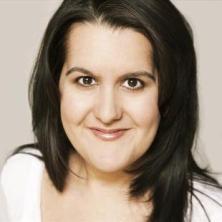
I recently reviewed Late Summer in the Vineyard by Jo Thomas and so I’m delighted to be part of the launch celebrations as Jo takes part in a late summer blog tour. You can read my review here. Today, Jo is sharing her top five holiday destinations for Late Summer.
Late Summer in the Vineyard was published by Headline on 11th August 2016 and is available for purchase in e-book and paperback from Amazon UK, Amazon US, W H Smith, Waterstones, from all good book sellers and directly from the publisher.
Late Summer in the Vineyard
 ,
,
Emmy Bridges has always looked out for others. Now it’s time to put down roots of her own.
Working for a wine-maker in France is the opportunity of a lifetime for Emmy. Even if she doesn’t know a thing about wine – beyond what’s on offer at the local supermarket.
There’s plenty to get to grips with in the rustic town of Petit Frère. Emmy’s new work friends need more than a little winning over. Then there’s her infuriatingly brash tutor, Isaac, and the enigmatic Madame Beaumont, tucked away in her vineyard of secrets.
But Emmy will soon realise that in life – just as in wine-making – the best things happen when you let go and trust your instincts. Particularly when there’s romance in the air…
Jo Thomas’s Top Five Holiday Destinations for Late Summer
I love Late Summer as the heat goes out of sun, but we can still enjoy the warm longer days before Autumn rolls in.
I love being in France in late summer, just in time for the grape harvest. The whole place becomes a hive of activity. The tractors start rolling up and down, waking up the sleepy lanes and the sunflowers are in bloom.
West Wales. I love being there, treasuring the last few days as the children surf, swim and spend evenings catching crabs off the rocks, enjoying their freedom before school starts again in September.
London in late summer when the children have gone back to school and many of the tourists have left. The heat has gone out of the streets but people are still sitting outside the cafes and bars and it feels like a lull before the shops and stores start gearing up for the next holiday season to kick in.
Crete. I am an outdoors person and love the sun but not when it’s at its hottest. I spent last late summer in Crete. We drove the mountains in the day, ate in wonderful, family run restaurants, and swam in a pool in the evenings, watching the moon come up with the smell of wild mountain herbs in the air and glass of raki in our hands.
And Italy, when the towns and villages are building up to the olive harvest and all the talk is of when to pick. I love seeing ground being swept, the orange and green nets being laid down under the trees and the tiny fires being lit in the olive groves, to keep the bugs at bay. The frantoio, the local olive press, is where everyone meets to discuss the olives and the quality of oil. Picnics are unpacked and glasses raised to celebrate another year’s harvest and to many more to come.
About Jo Thomas

Jo Thomas worked for many years as a reporter and producer, first for BBC Radio 5, before moving on to Radio 4’s Woman’s Hour and Radio 2’s The Steve Wright Show. In 2013 Jo won the RNA Katie Fforde Bursary. Her debut novel, The Oyster Catcher, was a runaway bestseller in ebook and was awarded the 2014 RNA Joan Hessayon Award and the 2014 Festival of Romance Best Ebook Award. Jo lives in the Vale of Glamorgan with her husband and three children.
Find Jo Thomas on Facebook and follow her on Twitter.
You can find more with these other bloggers too:

































